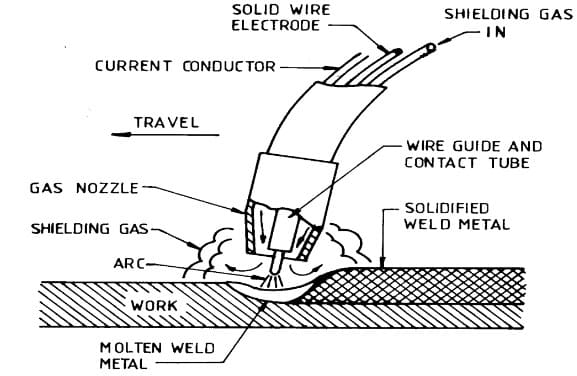Welding is an essential process in various industries but can be energy-intensive. Reducing energy consumption during welding lowers operational costs and contributes to sustainability efforts. This article will delve into methods and best practices for minimizing energy use in welding processes, benefiting both the environment and the bottom line.
I. Understanding Energy Consumption in Welding
Before exploring ways to reduce energy consumption, it's crucial to understand how energy is used in welding processes. Welding typically involves high-temperature heat sources to join materials, requiring substantial electrical power. The primary energy consumers in welding operations include:
Welding Equipment: Power sources, such as transformers, inverters, and rectifiers, consume significant amounts of electricity.
Auxiliary Equipment: Devices like cooling systems, ventilation units, and lighting also add to the total energy usage.
Welding Process: The specific welding technique employed, such as arc welding, resistance welding, or laser welding, influences energy consumption.
II. Choosing the Right Welding Process
Selecting the most energy-efficient welding process for a specific application is critical in reducing energy consumption. Here’s a comparison of common welding processes:

Advantages: High deposition rates, suitable for a wide range of materials, relatively low heat input.
Energy Efficiency: Moderate. Requires a continuous supply of shielding gas, which can add to energy consumption.

Advantages: High-quality welds, precise control, suitable for thin materials.
Energy Efficiency: Low to moderate. High heat input and slower welding speeds can lead to higher energy use.
c. Shielded Metal Arc Welding (SMAW):

Advantages: Versatile, suitable for outdoor and windy conditions.
Energy Efficiency: Low. Manual process with lower deposition rates, leading to longer welding times.
d. Resistance Welding:
Advantages: High-speed production, minimal filler material, good for thin sheets.
Energy Efficiency: High. Efficient use of electrical energy with minimal heat loss.
Advantages: High precision, low heat input, suitable for automation.
Energy Efficiency: High. Concentrated energy with minimal waste.
III. Optimizing Welding Parameters
Fine-tuning welding parameters can significantly impact energy consumption. Key parameters to consider include:
a. Current and Voltage:
b. Travel Speed:
c. Electrode Size and Type:
IV. Implementing Advanced Technologies
Adopting advanced technologies can further enhance energy efficiency in welding operations.
a. Inverter-Based Power Sources:
Inverter-based welding machines are more energy-efficient than traditional transformer-based machines. They provide precise control over welding parameters and reduce energy losses.
b. Pulsed Welding:
Pulsed welding techniques, such as pulsed MIG or TIG, allow for better control of heat input and energy use. By modulating the welding current, pulsed welding reduces energy consumption and improves weld quality.
c. Automated Welding Systems:
Automation can optimize welding processes, ensuring consistent and efficient energy use. Automated systems can precisely control welding parameters, reduce human error, and increase overall efficiency.
V. Maintaining and Upgrading Equipment
Proper maintenance and timely upgrades of welding equipment are crucial for minimizing energy consumption.
a. Regular Maintenance:
Importance: Regular maintenance ensures that welding equipment operates at peak efficiency. Clean and well-maintained equipment consumes less energy and produces better-quality welds.
Actions: Schedule routine inspections, clean components, and replace worn parts.
b. Upgrading to Energy-Efficient Models:
Importance: Newer welding machines are designed with energy efficiency in mind. Upgrading to modern, energy-efficient models can result in significant energy savings.
Actions: Evaluate the cost-benefit of replacing older equipment with new, energy-efficient models.
VI. Implementing Energy Management Practices
Adopting comprehensive energy management practices can lead to sustained reductions in energy consumption.
a. Energy Audits:
Conducting regular energy audits helps identify areas where energy is being wasted and opportunities for improvement. Audits can reveal inefficiencies in equipment, processes, and facility operations.
b. Energy Monitoring Systems:
Installing energy monitoring systems allows for real-time tracking of energy use. These systems provide valuable data that can be used to optimize welding processes and reduce energy waste.
c. Employee Training:
Educating employees about energy-efficient practices is essential. Training programs should cover:
Efficient Welding Techniques: Teach welders how to optimize parameters and reduce energy consumption.
Proper Equipment Use: Ensure employees know how to operate and maintain equipment for maximum efficiency.
Energy Awareness: Foster a culture of energy conservation within the organization.
VII. Utilizing Sustainable Materials and Practices
Incorporating sustainable materials and practices into welding operations can further reduce energy consumption and environmental impact.
a. High-Quality Filler Materials:
Using high-quality filler materials reduces the need for rework and minimizes waste. High-quality materials produce better welds with less energy input.
b. Preheating and Post-Weld Heat Treatment:
Preheating materials before welding and applying post-weld heat treatments can reduce energy consumption by minimizing the need for excessive heat input during the welding process.
c. Recycling and Reusing Materials:
Recycling and reusing materials can reduce the overall energy footprint of welding operations. Implementing a robust recycling program helps conserve resources and energy.
VIII. Future Trends and Innovations
Looking ahead, several trends and innovations hold promise for further reducing energy consumption in welding.
a. Advanced Materials:
The development of advanced materials, such as lightweight alloys and composites, can reduce the energy required for welding. These materials often require lower heat input and offer better performance.
b. Artificial Intelligence and Machine Learning:
AI and machine learning can optimize welding processes by analyzing data and making real-time adjustments. These technologies can improve energy efficiency and weld quality.
c. Renewable Energy Integration:
Integrating renewable energy sources, such as solar and wind power, into welding operations can reduce reliance on conventional energy sources and lower the overall energy footprint.
IX. Conclusion
Reducing energy consumption during welding is not only beneficial for the environment but also enhances operational efficiency and reduces costs. By choosing the right welding process, optimizing parameters, implementing advanced technologies, maintaining and upgrading equipment, adopting energy management practices, utilizing sustainable materials, and staying abreast of future trends, industries can achieve significant energy savings. Embracing these strategies ensures a sustainable and energy-efficient future for welding operations.
Related articles:
1. Risk-free Welding: Why is Welding Fume Extraction so Important?
2. How to Weld Stainless Steel: Tips and Tricks
3. Welding Tips: 6 Secrets of Beautiful TIG Welding
4. Welding Safety: Hazards, Tips, & Precautions
5. How to Weld Vertical: Tips and Techniques for Various Processes






